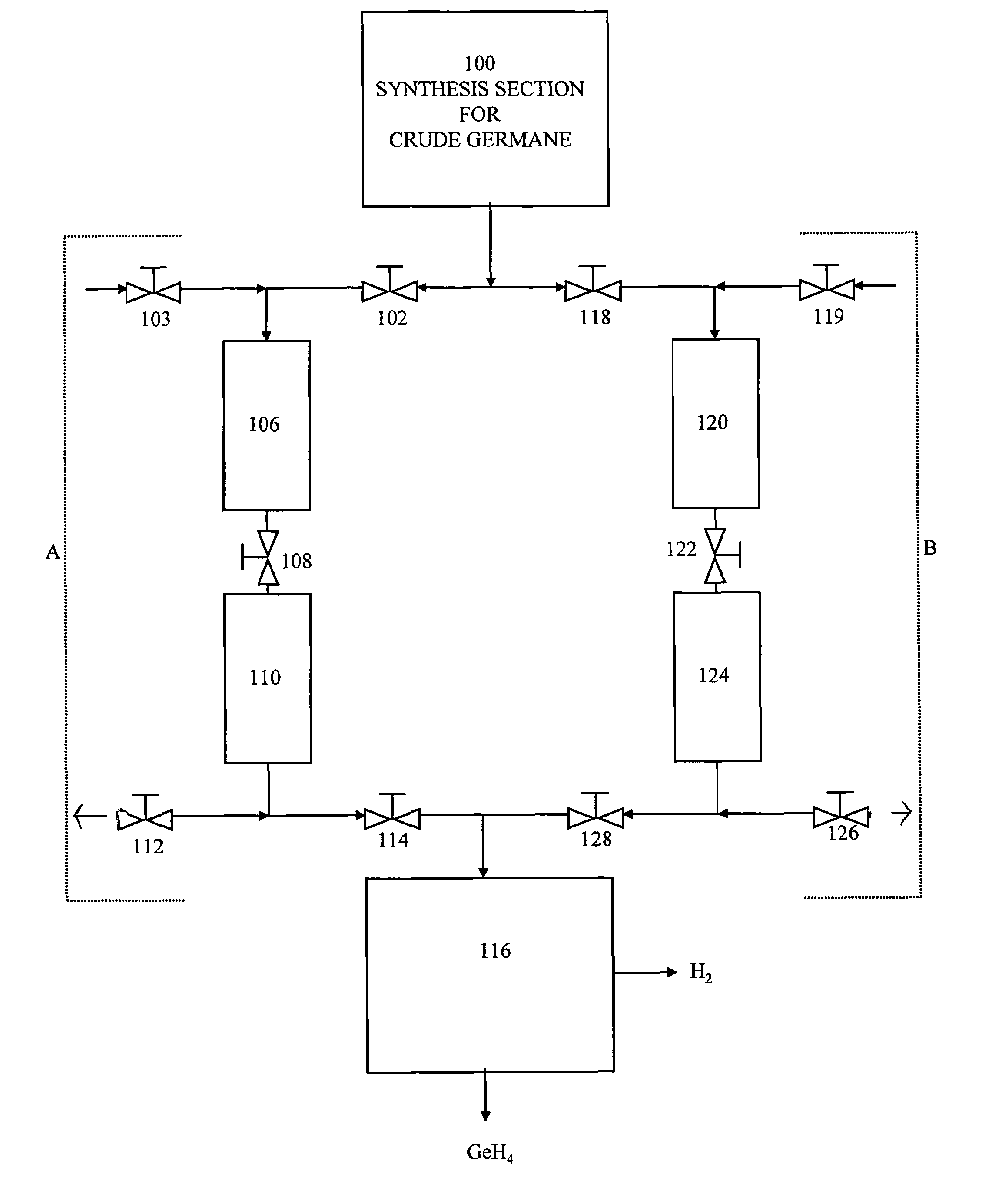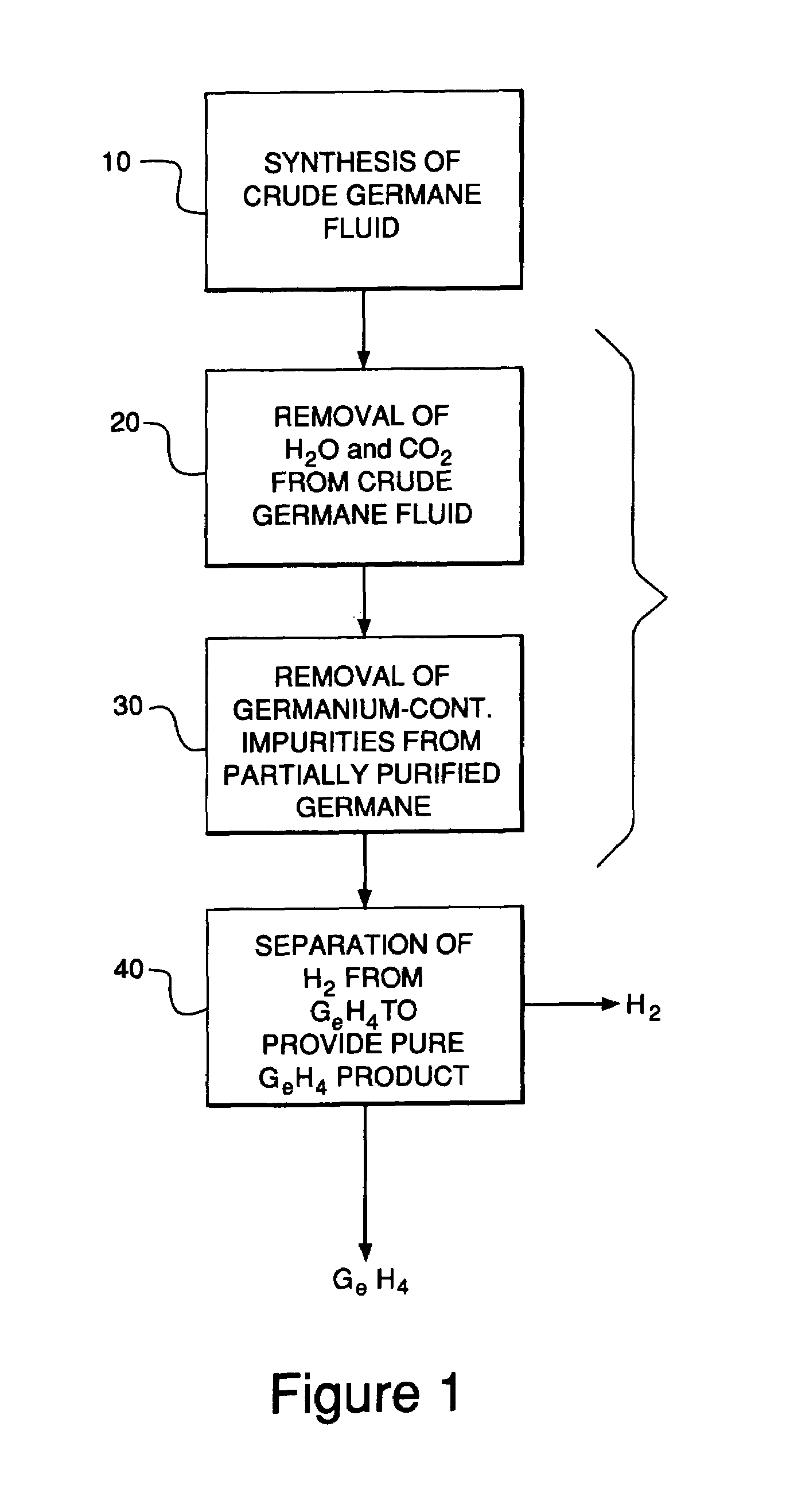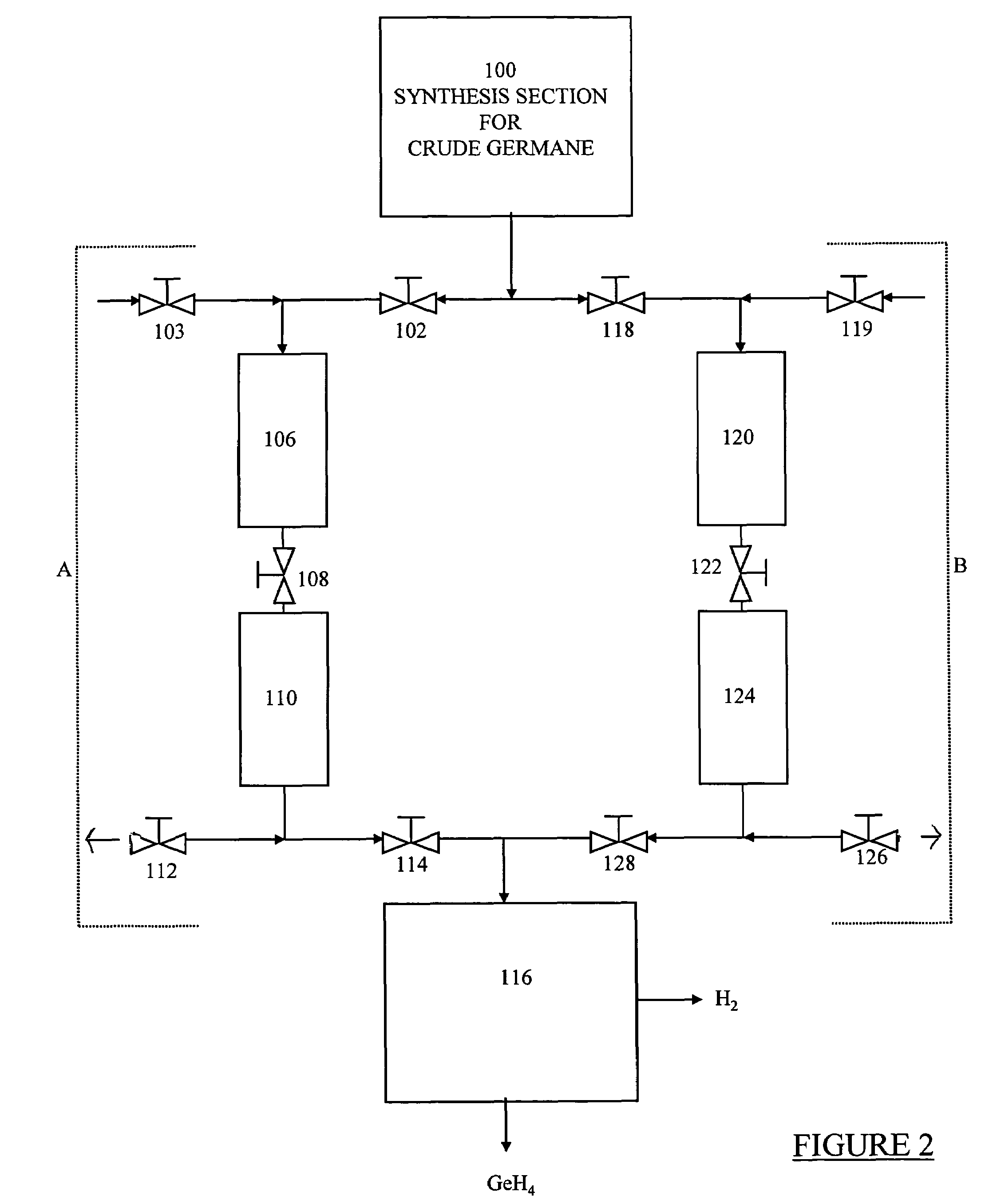Process for purification of germane
a technology of purification process and germane, applied in the direction of chemistry apparatus and processes, separation processes, dispersed particle separation, etc., can solve the problems of slow decomposition of germane, inability to use germane for end-use applications, and generation of unacceptable levels of structural defects
- Summary
- Abstract
- Description
- Claims
- Application Information
AI Technical Summary
Benefits of technology
Problems solved by technology
Method used
Image
Examples
example 1
[0025]A 3.3-gram sample of crude germane containing 1.2 volume percent digermane, Ge2H6, was passed through a stainless steel column (0.43-inch inner diameter and 12-inch length) that contained 16.8 grams of molecular sieve (mol. sieve) 13X (8–12 mesh spheres manufactured by Aldrich Chem. Co.). The sample was passed through the column at ambient temperature and a pressure that ranged from 2 to 177 Torr until 3.2 grams, or 97% of the original crude weight, of the purified germane was collected downstream in a cold trap. Upon warming to room temperature, gas chromatographic analysis of the collected germane showed that the digermane concentration had been lowered to 10 ppmv.
example 2
[0026]A portion of a 13.7 gram sample of crude germane that contained 1.7 vol % of digermane and a detectable amount (>1 ppmv as measured by GC) of trigermane was passed through the same mol. sieve 13X column used in Example 1. The crude germane was passed through the mol. sieve 13X column at a pressure of 18 psig and column temperature of 30° C. until 11.5 grams of purified germane was collected downstream in a cold trap. Upon warming to room temperature, GC analysis of the collected germane showed the digermane concentration had been lowered to 1.3 ppmv and the trigermane concentration was below the detection limit, or less than 1 ppmv.
[0027]The cold trap was recooled and the flow of remaining crude germane was continued through the mol. sieve 13X column until another 1.8 grams of germane was collected giving a total of 13.3 grams, or 97% of the original crude weight of germane collected. GC analysis showed the digermane concentration was 4.5 ppmv and the trigermane concentration ...
example 3
[0028]Crude germane was prepared through the aqueous sodium borohydride reduction of aqueous Ge(IV) ions. A 1 liter glass reactor flask equipped with a magnetic stirring bar was charged with 700 mL of water and purged with helium to remove all the air contained therein. Germanium tetrachloride (GeCl4, 14.8 grams) was then added to the reactor. A solution of the reducing agent NaBH4 (15.7 g) in 100 mL of water was then added over a 1 hour period to the reactor flask through an addition funnel fitted on top of the flask. Under constant stirring the reaction mixture temperature was maintained below 40° C. using a water bath.
[0029]A gaseous, germane / hydrogen reaction product, containing about 5 vol % concentration crude GeH4 and about 95 vol % gaseous H2, evolved from the reaction mixture and was drawn out of the flask through a cooling condenser maintained at 0° C. to lower the dew point. From the condenser, the germane / hydrogen gas reaction product was passed through a stainless steel...
PUM
| Property | Measurement | Unit |
|---|---|---|
| pore diameter | aaaaa | aaaaa |
| temperatures | aaaaa | aaaaa |
| temperatures | aaaaa | aaaaa |
Abstract
Description
Claims
Application Information
 Login to View More
Login to View More - R&D
- Intellectual Property
- Life Sciences
- Materials
- Tech Scout
- Unparalleled Data Quality
- Higher Quality Content
- 60% Fewer Hallucinations
Browse by: Latest US Patents, China's latest patents, Technical Efficacy Thesaurus, Application Domain, Technology Topic, Popular Technical Reports.
© 2025 PatSnap. All rights reserved.Legal|Privacy policy|Modern Slavery Act Transparency Statement|Sitemap|About US| Contact US: help@patsnap.com



